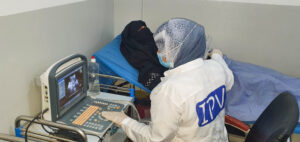
The healthcare system in northeastern Syria has always suffered from neglect by the central government even before the start of Syrian crises, impacting the availability and quality of services. The system was further damaged by conflicts with ISIS and military campaigns. Water crises in the north have caused a rise in waterborne diseases. According to WHO HERAMS data, most health facilities are non-functional or partially functional. Out of 16 public hospitals, only one is fully operational, nine are partially functional, and six are non-functional. No districts meet the emergency requirement of 10 hospital beds per 10,000 people. Among 281 healthcare centers,123 are partially functioning, while 158 are non-functional. Over 50% of physicians have left, creating a chronic shortage of healthcare professional.
HEALTH SECTOR STRATEGY:
IPV strategies for health sector divided into the following:
- Providing lifesaving health care services and support to the most vulnerable population.
- Building healthcare system’s capacity in northeast Syria.
- Enhancing cross-sectoral integration : WASH, nutrition, GBV, protection Sector objectives
1 – INCREASE ACCESS TO URGENT LIFESAVING HEALTH CARE SERVICES.
- Providing rapid health assessment for any emergency to address the gap and advocate for solutions.
- Deploy rapid health response through first aid medical teams and mobile clinics.
- Provide advance rapid response through mobile resources to health emergency points, establish new medical/reception points, transit facilities.
2 – INCREASE ACCESS TO SUSTAINABLE HEALTH CARE SERVICES.
- Establish and operate primary health care centers, in any accessible region build on needs, including basic and comprehensive primary health care centers “BPHC and CPHC”.
- Strengthen secondary health care programs, through operating and managing hospitals.
- Emphasize the mother and childcare programs, by delivering specialized services both in maternity center, and throughout community-based programs.
- Provide vertical health specialized programs, like programs for NCD, Hemodialysis, mental health, Covid-19 etc.
- Enhance the community health approach, by integrated health in other sectors’ outreach activities.
3 – STRENGTHEN HEALTH SECTOR CAPACITY.
- Renovate and equipped damaged and non-functional health centers.
- Provide onsite and online trainings to health care professionals based on needs assessment.
- Promote health education programs, through cooperation and affiliation with academic institutions.
4 – IMPROVING HEALTH INFORMATION SYSTEMS TO STRENGTHEN EMERGENCY RESPONSE MEASURES.
5 – ENHANCING DISEASE SURVEILLANCE TO BETTER RESPOND TO POTENTIAL OUTBREAKS OF DISEASES.







